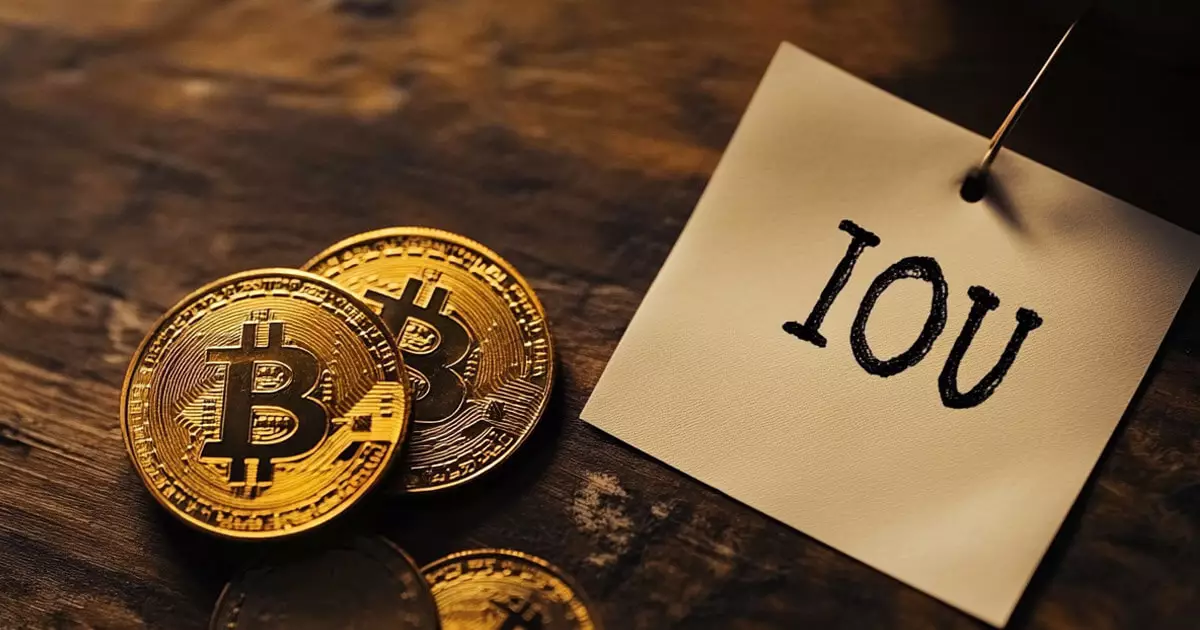In the vibrant world of cryptocurrency, the relationship between exchanges, institutional investors, and the market is complex and often contentious. Recently, allegations against Coinbase, particularly regarding its practices with BlackRock’s funds, have stirred significant debate within the crypto community. These claims, which surfaced on social media, suggest that Coinbase is misleading investors by issuing debt letters instead of directly backing the iShares Bitcoin Trust (IBIT ETF) with actual Bitcoins (BTC). In the midst of this uproar, notable figures like Bloomberg analyst Eric Balchunas and Coinbase CEO Brian Armstrong have attempted to clarify the situation, but the concerns raised are reflective of deeper tensions in the market.
Eric Balchunas, a seasoned ETF analyst, quickly responded to the ongoing speculation, deeming the accusations as unfounded. His assertion that BlackRock, a heavyweight in asset management, would never tolerate such misconduct serves to underline the weight of these allegations. Balchunas pointed out that any attempt by Coinbase to manipulate prices using BlackRock’s funds would not only be unethical but also in violation of regulatory frameworks. This dismissal emphasizes an important aspect of institutional participation in cryptocurrency—the reliance on established protocols and compliance to maintain credibility and trust.
However, the emotional gravity surrounding Bitcoin could lead many investors to seek scapegoats for market downturns—particularly a slump that has persisted since March. This behavior is not unique to Bitcoin; historical patterns show that traders often channel their frustrations toward external entities. Balchunas illustrates this sentiment aptly, suggesting that rather than introspection, Bitcoin investors prefer to attribute blame towards entities like ETFs, which, he argues, have provided some economic cushioning during challenging times.
Brian Armstrong bolstered Balchunas’ statements by explaining Coinbase’s operational protocols concerning its ETFs. According to Armstrong, all minting and burning processes are settled on-chain, revealing a firm commitment to transparency and regulatory compliance. This aspect is crucial for institutional clients who often have rigorous standards for security and accountability. By offering off-chain options, including over-the-counter (OTC) trades, Coinbase caters to its institutional clientele’s preferences for discretion in their transactions, a factor that underscores the evolving landscape of digital asset management.
However, Armstrong’s ambiguity regarding specific transaction details also hints at a broader issue—trust. In an industry based heavily on decentralized finance and peer-to-peer trust mechanisms, the need for clients to rely on a centralized custodian is inherently contradictory. This dilemma invites skepticism, prompting questions about whether centralized exchanges can maintain the ethos that initially attracted many to Bitcoin.
Balchunas highlighted a significant element of market psychology that may contribute to the backlash against Coinbase—historical skepticism of financial institutions. This sentiment is not new; it echoes past accusations faced by gold ETFs, where “gold bugs” criticized the SPDR Gold Shares (GLD) as “paper gold.” Such comparisons emphasize a recurring theme: the fear that the financial products created to facilitate investment may not adequately reflect the underlying asset’s intrinsic value. Like gold, Bitcoin is surrounded by a narrative steeped in digital sovereignty, and any perceived dilution of that purity can provoke intense backlash.
The recent launch of Coinbase’s synthetic Bitcoin product, cbBTC, has further compounded these fears. Accusations regarding its lack of proof of reserves and potential centralization have led figures like Tron’s Justin Sun to declare it “trust me” investment—an unsettling proposition in a space characterized by its anti-establishment roots. Critics’ concerns about government intervention echo broader anxieties regarding user rights and asset security, further complicating Coinbase’s narrative.
The unfolding saga surrounding Coinbase’s allegations against BlackRock’s fund management practices exemplifies the intricate dynamics at play within the cryptocurrency market. As institutional adoption grows, so does scrutiny—both from traditional investors and the unique community of crypto enthusiasts. The delicate balance of upholding trust while navigating regulatory expectations presents a challenge for exchanges like Coinbase. While figures like Balchunas and Armstrong work to reassure the market, the deeper issues of trust, transparency, and the very nature of Bitcoin as a democratic financial tool will persist. Ultimately, as the cryptocurrency landscape evolves, embracing open dialogue and critical examination will be essential in establishing sustainable practices that can withstand scrutiny and foster investor confidence.













